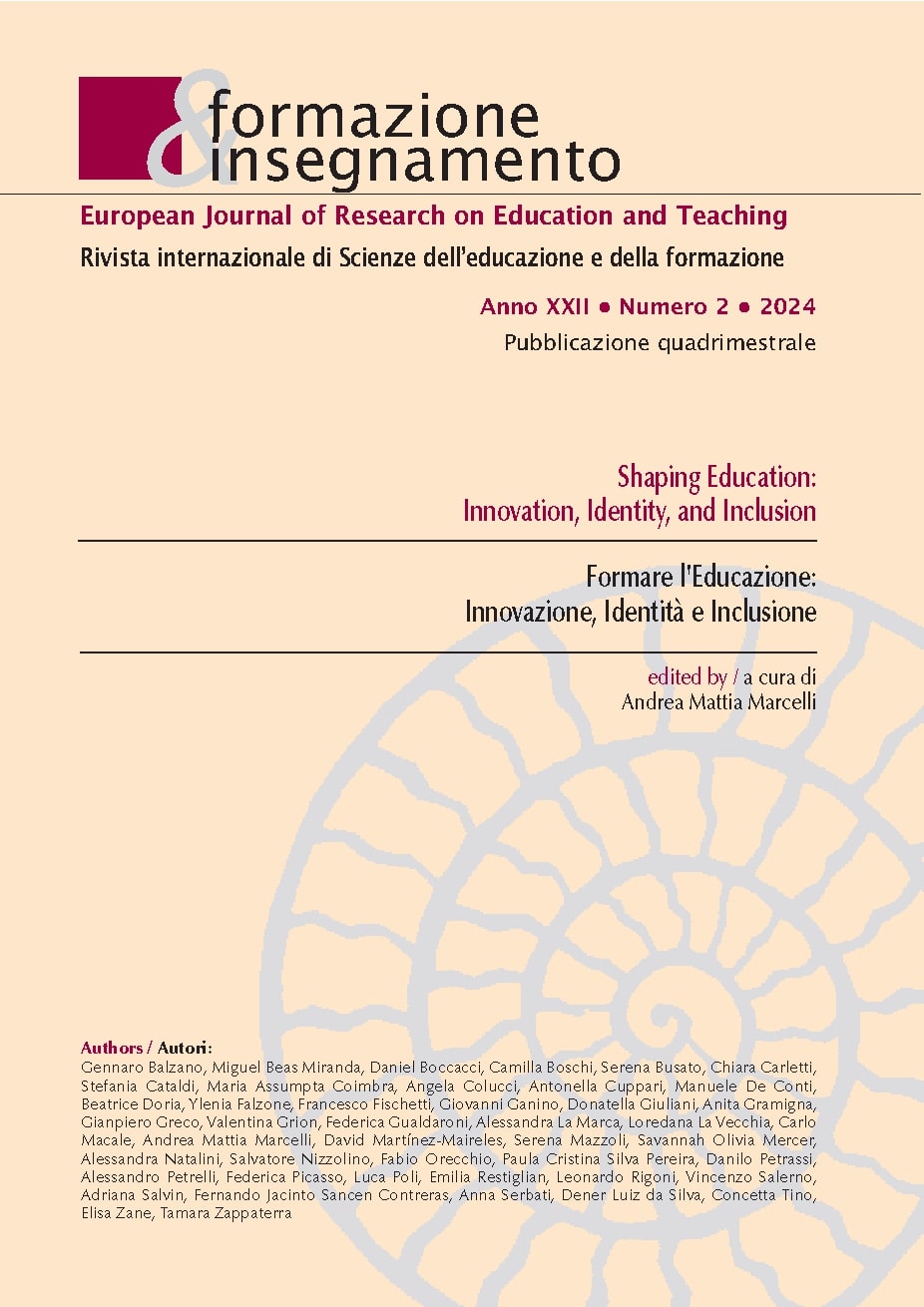Knowledge and Society: Dynamic Education
DOI:
https://doi.org/10.7346/-fei-XXII-02-24_18Keywords:
Knowledge, Society, Education, Epigenesis, Universal DynamismAbstract
This essay offers a view of human knowledge and society within the framework of universal dynamism postulated by Quantum Mechanics. It begins with the interaction that each human being has with the world around them through their knowledge and action. We analyze the relationship of human beings as communication to establish a generalized vision of their reality and collaborate with each other to achieve their own good. We identify scientific and technological knowledge as a factor that imparts new characteristics to universal dynamism. Adopting the Quantum Mechanics paradigm and based on Alfred North Whitehead's Philosophy of Organism, we highlight the consciously creative role of the rational knower, capable of directing the universal dynamism that begins in education, as a central part of Society.
References
Changeux, J. P. (2005). El Hombre de Verdad (V. Aguirre, Trans.). FCE.
Damasio, A. (2012). SELF comes to MIND: Constructing the Conscious Brain. Vintage Books.
Edelman, G. M. (2006). Second Nature: Brain Science and Human Knowledge. Yale University Press.
Gazzaniga, M. S. (2011). Who’s in Charge? Free Will and the Science of the Brain. HarperCollins.
Jacob, F. (2005). El Juego de lo Posible (L. Sagols, Trans.). FCE.
Linás, R. R. (2002). El cerebro y el mito del yo. Norma.
Schrödinger, E. (2007). Mente y Materia (J. Wagensber, Trans.). Tusquets.
Spinoza, B. (1677). Ethica ordine geometrico demonstrata.
Stapp, H. P. (2001). Mindful Universe: Quantum Mechanics and the Participating Observer. Springer.
Whitehead, A. N. (1945). Science and the Modern World. MacMillan.
Whitehead, A. N. (1979). Process and Reality: An Essay in Cosmology (D. R. Griffin & D. W. Sherburne, Eds.; Revised). The Free Press.
Published
How to Cite
Issue
Section
Categories
License
Copyright (c) 2024 Fernando Jacinto Sancen Contreras

This work is licensed under a Creative Commons Attribution 4.0 International License.
Formazione & insegnamento is distributed under Attribution 4.0 International (CC BY 4.0).
For further details, please refer to our Repository & Archiving Policy, as well as our Copyright & Licensing Terms.





